In the hustle and bustle of daily life, it’s not uncommon for our furry companions to be left home alone. While we may feel guilty about this, it’s important to ensure our dogs are content and entertained during these solitary moments. The key to a happy pup at home alone lies in providing engaging toys that not only occupy their time but also stimulate their minds. Let’s delve into the world of dog toys and discover how they can transform your dog’s home alone time into a delightful experience.
The Dilemma of Dogs at Home Alone
Leaving your furry friend at home can be a trying experience for both you and your pup. Dogs are social creatures, and the quiet solitude of home alone can lead to a variety of behaviors that might concern you. Whether it’s destructive chewing, excessive barking, or just plain boredom, finding ways to keep your dog occupied while you’re away is crucial. Here’s a closer look at the challenges dogs face when they’re left to their own devices and why it’s so important to find solutions that keep them busy and happy.
Dogs, by nature, are explorers and companions. They thrive on human interaction and activity, which is why the concept of home alone can be so daunting. When left without their favorite human companion, many dogs experience what is known as separation anxiety. This anxiety can manifest in various ways, from mild unease to more severe symptoms like destructive behavior or excessive vocalization.
The lack of stimulation is a major factor in why dogs might act out when they’re left alone. Without the energy of play or the comfort of your presence, they can become restless and seek relief in less desirable ways. Imagine spending a day without any form of entertainment or interaction; it’s easy to see how a dog might react similarly.
One common challenge is the temptation to chew on anything within reach. Dogs chew for many reasons: it helps clean their teeth, relieves stress, and can even be a natural instinct to explore their environment. When they’re left alone, however, they might not have the opportunity to engage in constructive chewing, leading them to turn to your furniture, shoes, or other household items as substitutes.
Barking is another common response to loneliness. Dogs use their voices to communicate, and when they’re home alone, they might bark to express their frustration, boredom, or even fear. This can be a source of stress not only for your dog but also for your neighbors and anyone else who might be disturbed by the noise.
To address these challenges, it’s essential to provide your dog with a variety of toys and activities that can keep them engaged and entertained. These tools can help alleviate the symptoms of separation anxiety and provide a constructive outlet for their energy and curiosity.
Interactive toys are a fantastic way to keep your dog’s mind active and engaged. These toys often require your dog to problem-solve or manipulate them in some way to receive a reward, such as a treat or a toy. This not only provides mental stimulation but also satisfies their natural instincts to hunt and forage.
Chew toys are another essential tool in the fight against destructive behavior. They can be filled with treats, designed to be durable, or even frozen to provide a cooling effect. These toys not only help keep your dog’s teeth clean but also give them something to focus on that isn’t your furniture.
Smart toys have become increasingly popular, thanks to advancements in technology. These toys can be connected to your smartphone or other devices, allowing you to remotely interact with your dog. They can dispense treats, play games, or even track your dog’s activity levels, providing you with peace of mind and your pup with endless entertainment.
Choosing the right toy for your dog involves considering their size, breed, and individual preferences. A toy that’s too small might be easily destroyed, while one that’s too large might not be engaging enough. Observing your dog’s play style can also help you select the best toy for them. Some dogs prefer toys that mimic the scent of their human, while others might be drawn to toys that mimic the movement of other animals.
The benefits of keeping your dog busy are numerous. For one, it can help prevent destructive behavior and excessive barking. It can also provide a sense of security for your dog, knowing that they have something to do when you’re not around. Plus, it can be a great way to bond with your pup when you return home, as they’ll be looking forward to playing with their favorite toys.
In conclusion, the dilemma of dogs at home alone is a common issue that requires thoughtful consideration and proactive solutions. By providing your dog with a variety of toys and activities, you can help ensure that they remain happy, healthy, and well-behaved even when you’re not there to。 Remember, a well-prepared dog is a happy dog, and a happy dog is a better companion for both you and your neighbors.
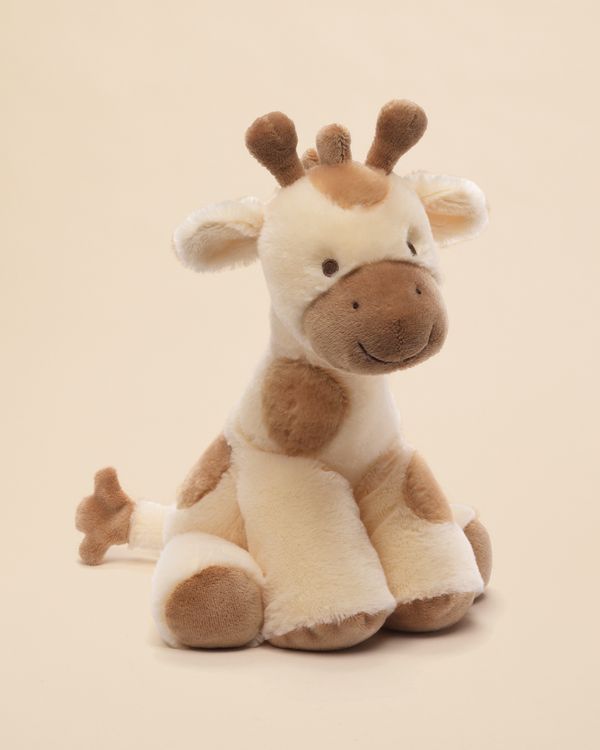
Creative Toys to Keep Fido Entertained
When your furry friend is home alone, it’s crucial to keep them entertained and engaged to prevent boredom or destructive behavior. Creative toys are the secret weapon in ensuring your pup has a satisfying solo playtime. From puzzles that stimulate their minds to interactive gadgets that mimic their favorite human activities, here’s how to keep Fido entertained with a variety of imaginative toys.
1. Puzzle Toys That Challenge Their BrainsInteractive puzzle toys are a fantastic way to keep your dog’s brain engaged. These toys often come with compartments to hide treats, balls, or kibble. Your dog will have to figure out how to manipulate the toy to access the hidden treasures, providing hours of mental stimulation. It’s like a game of hide and seek for your four-legged companion.
2. Treat Dispensing Toys for a Scented AdventureDogs have an incredible sense of smell, and treat dispensing toys take advantage of this. These toys are designed to release treats only when your dog licks, nuzzles, or rolls them around. Not only do they enjoy the taste, but the scent also triggers their natural hunting instincts, making playtime a multi-sensory experience.
3. Interactive Plush Toys That MovePlush toys that move or have sounds can be surprisingly engaging for dogs. A plush toy with a dangling bell or a tail that wags when pulled can mimic the movements of a real animal, sparking your pup’s curiosity and playfulness. These toys are especially great for dogs that have a soft spot for soft things.
4. Squeaky Toys That Never Lose Their CharmNo dog toy collection is complete without a few squeaky toys. These classic favorites provide immediate entertainment with their high-pitched sound. Squeaky toys can be used for fetch or simply as a way to keep your dog’s attention when they’re feeling lonely.
5. Agility Toys for a Full-Body WorkoutFor dogs that are up for a physical challenge, agility toys can be a fantastic addition to their toy box. These include tunnels, hoops, and teeter-totters that can be set up for a fun obstacle course. They encourage your dog to move, jump, and balance, providing a great workout while they play.
6. Toy Chews That Keep the Jaws BusyChewing is a natural behavior for dogs, and providing them with appropriate chew toys can help prevent destructive chewing. From durable rubber bones to rope toys, these chews can satisfy your dog’s need to chew while keeping their teeth clean and healthy.
7. Hide-and-Seek Toys for a Fun GameDogs love to play hide-and-seek, and there are toys designed specifically for this game. You can hide treats or toys around the house, and your dog can use their nose to find them. This game not only exercises their sense of smell but also gives them a sense of accomplishment when they locate the hidden items.
8. Training and Behavior Toys for LearningFor dogs that are learning new tricks or undergoing training, there are toys that can reinforce good behavior. Toys like clickers or treat dispensers can be used to mark desired behaviors, making training sessions more fun and effective.
9. Water Toys for a Splashy Good TimeIf your dog enjoys water, consider adding some water-resistant toys to their collection. Floating balls, rubber ducks, or even a kiddie pool can make for a refreshing and enjoyable playtime, especially on hot days.
10. Customized Toys for a Personal TouchLastly, you can always get creative by making your own toys or customizing them to your dog’s preferences. A t-shirt with their favorite scent or a toy that resembles a favorite toy from the park can be a personal touch that keeps your dog’s playtime special.
Remember, the key to keeping your dog entertained when home alone is to provide a variety of toys that cater to different aspects of their personality and needs. Whether they’re a chewer, a hunter, or a puzzle solver, there’s a toy out there that will keep Fido happy and engaged until you return.
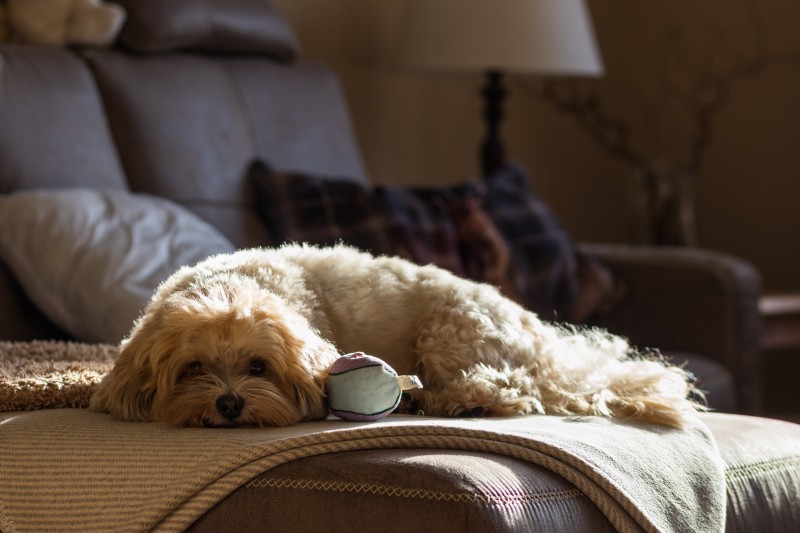
Interactive Toys: The Perfect Solution for Busy Beagles
Interactive toys have revolutionized the way we engage our furry friends, especially when they’re left home alone. These clever gadgets are designed to stimulate both the mind and body, ensuring that your busy beagle stays entertained and engaged throughout the day. Here’s a closer look at why interactive toys are the perfect solution for keeping your canine companion occupied:
-
Engaging the Mind: Interactive toys are not just about physical play; they’re also about mental stimulation. Many of these toys come with puzzles that challenge your dog’s problem-solving skills. From treat-dispensing balls that require your dog to push, pull, or roll them to find hidden snacks, to puzzle mats that hide treats under different shapes and textures, these toys keep your beagle’s brain active.
-
Physical Exercise: While mental stimulation is crucial, physical activity is equally important. Interactive toys often encourage your dog to move, which is fantastic for maintaining a healthy weight and preventing boredom. A simple tug-of-war rope can turn into a full-body workout, while a ball that bounces erratically can have your beagle chasing after it for minutes on end.
-
Satisfying Natural Instincts: Dogs are naturally curious and have a strong instinct to hunt and forage. Interactive toys that mimic these behaviors can be incredibly satisfying for your beagle. For instance, a toy that can be buried in the yard or filled with treats to dig out can provide a sense of accomplishment and mimic the thrill of the hunt.
-
Variety is Key: One of the great things about interactive toys is the variety available. There are toys that make noise, toys that change color, and even toys that can be used both indoors and outdoors. This variety ensures that your dog doesn’t get bored with the same old thing, keeping the playtime fresh and exciting.
-
Customization for Different Levels of Play: Interactive toys are not one-size-fits-all. They come in different levels of difficulty, allowing you to choose the right toy for your dog’s play style and skill level. For instance, a beginner puzzle toy might be a simple treat-dispensing ball, while an advanced puzzle could be a multi-layered contraption that requires more sophisticated problem-solving.
-
Social Interaction: Even when your beagle is home alone, interactive toys can simulate social interaction. Toys with moving parts, like a toy that wiggles or barks, can provide a sense of companionship. Some toys even have replaceable parts, so you can swap out different characters or sounds to keep the playtime dynamic.
-
Durability and Safety: High-quality interactive toys are built to last, which is important for a dog that might be a bit rough on their toys. Look for toys made from sturdy materials like rubber or durable plastics. Additionally, ensure that the toys are safe for your dog, with no small parts that could be swallowed or sharp edges that could cause injury.
-
Training and Bonding: Interactive toys can also be used as training aids. For example, teaching your dog to use a treat-dispensing toy can reinforce commands like “wait” or “leave it.” This not only keeps your dog busy but also strengthens the bond between you and your pet.
-
Environmental Consideration: Some interactive toys are designed with environmental responsibility in mind. Look for toys made from recycled materials or those that are biodegradable. This not only helps the planet but also gives you peace of mind that you’re making a sustainable choice for your furry friend.
-
Monitoring and Adjustment: Finally, it’s important to monitor your dog’s interaction with their interactive toys. If a toy seems too difficult or too easy, adjust accordingly. This ensures that your beagle remains challenged and engaged without becoming frustrated or disinterested.
Interactive toys are a fantastic way to keep your busy beagle entertained when you’re not around. By providing a mix of mental and physical stimulation, these toys can help prevent destructive behaviors and ensure that your dog enjoys a happy, healthy, and fulfilling alone time.
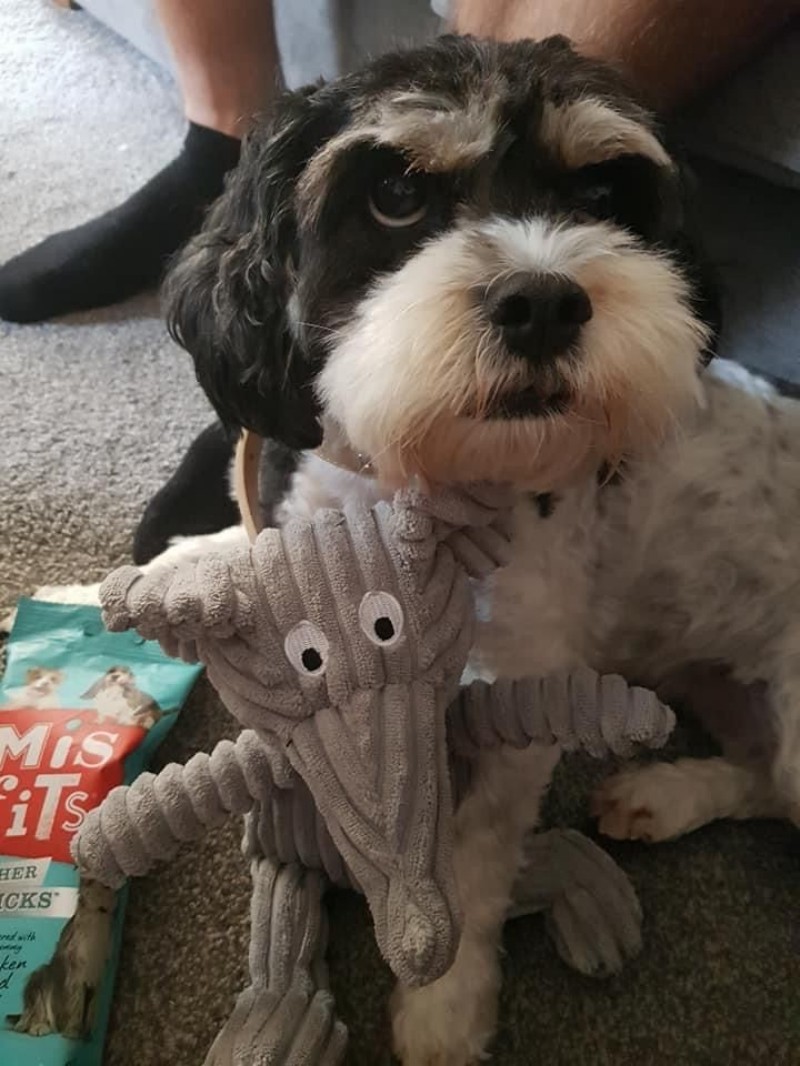
Chew Toys: Satisfying Your Dog’s Natural Instinct
Chewing is an innate behavior for dogs, a way to explore the world with their mouths, clean their teeth, and even express stress. Here’s how chew toys can satisfy this natural instinct in our furry friends.
Dogs have a remarkable ability to crunch through tough materials, which is why a good chew toy is essential for keeping their minds occupied and their teeth healthy. The right chew toy can also be a lifesaver for owners who find their homes dotted with the remnants of furniture or shoes.
One of the most popular types of chew toys is the classic rope toy. Made from durable, woven rope, these toys are perfect for a gentle, but firm, gnawing session. They’re also excellent for massaging the gums and providing a satisfying workout for the jaw muscles. The texture of the rope can help clean teeth and scrape away plaque, making it a win-win for dental health.
For the more aggressive chewers, there are rubber or nylon toys designed to withstand a lot of abuse. Kongs, for instance, are a staple in many dog owners’ arsenals. These rubber containers can be filled with treats, frozen, and then left for your dog to chew through. They’re not only a great way to keep your dog busy but also an excellent tool for mental stimulation.
Another fun option is the dental chew designed specifically to mimic the taste and feel of real bones. These chews often come in various flavors that dogs find irresistible, and they’re made to be durable enough to last through several chewing sessions. They can also be soaked in water to soften, which is great for dogs with sensitive teeth.
Some dogs love the challenge of interactive chew toys. Puzzle toys that require dogs to work to get treats or snacks out can be incredibly engaging. These types of toys not only satisfy the chewing instinct but also provide mental stimulation, helping to prevent boredom and destructive behavior.
For those who want to cater to their dog’s hunting instincts, there are treat-dispensing toys that mimic the action of hunting. These toys can be filled with food or treats and hidden around the home or yard, encouraging your dog to sniff them out and chew to retrieve the hidden rewards.
Chew toys aren’t just for entertainment; they serve a practical purpose. By providing a chew toy, you’re giving your dog a healthy outlet for their chewing behavior. This can prevent them from turning to less appropriate items, like shoes, furniture, or other household items.
It’s important to select the right chew toy for your dog’s size, strength, and breed. Small dogs might do well with smaller, softer chews, while large breeds may require sturdier, heavier-duty toys. Some breeds, like the Pug or the Shih Tzu, may have smaller jaws and less robust teeth, so it’s essential to choose toys that are appropriate for their specific needs.
Regularly checking your dog’s chew toys is crucial. Over time, even the toughest chew toy can become damaged and pose a choking hazard or risk of swallowing small pieces. It’s a good practice to inspect the toy after each session, and to replace it if it starts to show signs of wear or breakage.
Lastly, chew toys can be a great way to bond with your dog. Spend time playing with your dog, showing them how to use the toy correctly, and rewarding them for good behavior. This interaction can strengthen the bond between you and your furry companion, while also ensuring that their natural instinct to chew is fulfilled in a safe and constructive manner.
In summary, chew toys are a vital part of a dog’s life, offering both physical and mental benefits. They provide a healthy outlet for chewing, help maintain dental hygiene, and can be a fantastic way to engage with your dog. By choosing the right chew toy and monitoring its condition, you can ensure that your dog stays happy, healthy, and well-behaved, even when you’re not around.
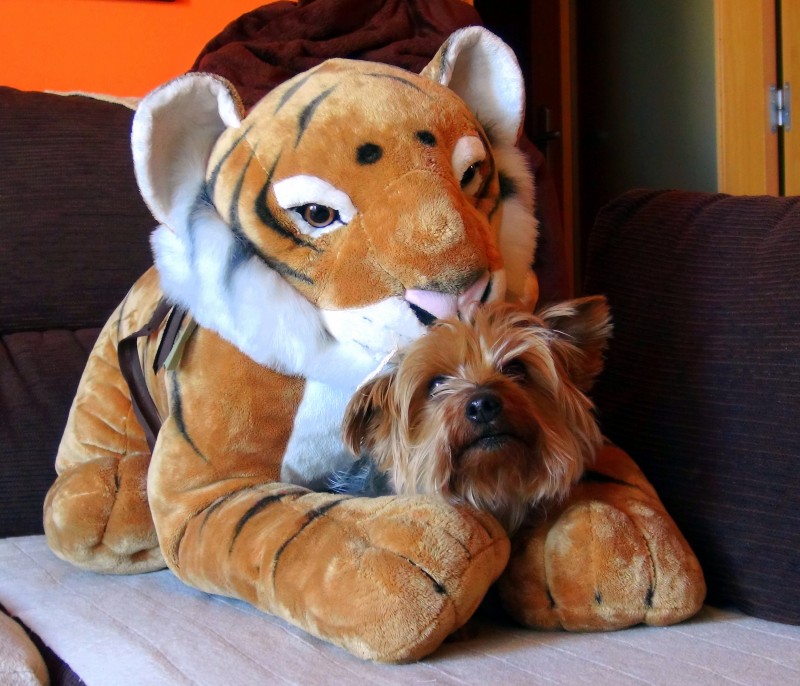
Smart Toys: The Future of Solo Play
In a world where technology intertwines with our daily lives, it’s no surprise that the pet industry has caught up with this trend. Smart toys have emerged as the new frontier for keeping our furry friends entertained and engaged when we’re not around. These innovative gadgets not only provide mental stimulation but also a touch of futuristic fun for our canine companions.
Dogs, with their natural curiosity and intelligence, thrive on interaction and engagement. Smart toys harness this drive by offering dynamic and responsive play experiences. Imagine a toy that can mimic the movement of a squirrel or the chirping of birds, encouraging your dog to chase and interact with it. These toys often come equipped with sensors and motion detection, which react to your dog’s movements, making playtime a two-way street.
One of the standout features of smart toys is their ability to adapt to your dog’s play style. Some are designed to be chased, while others might offer puzzle elements that require problem-solving skills. This adaptability ensures that the toy remains challenging and entertaining, even after days of use. For instance, a smart ball might start off as a simple chase toy but evolve into a puzzle ball that dispenses treats when your dog rolls it correctly.
The integration of technology into these toys also means they can be controlled remotely. This feature is particularly useful for those who work long hours or travel frequently. With a simple tap on your smartphone, you can activate the toy, keeping your dog occupied and entertained. It’s like being able to say “I’m coming home” even when you’re miles away.
Safety is a paramount concern when it comes to smart toys. Manufacturers understand that dogs are unpredictable and can sometimes be rough on their toys. As such, these toys are often built with durable materials that can withstand the occasional bite or toss. They are also designed to prevent over-excitement, with features that can turn off the toy if it detects an excessive amount of playtime intensity.
Smart toys also offer a level of personalization that traditional toys can’t match. You can set up specific play sessions, program the toy to respond to your dog’s name, or even schedule automatic playtimes. This not only ensures that your dog is entertained but also that their routine remains consistent, which is especially beneficial for dogs with anxiety or separation issues.
Moreover, smart toys can provide valuable insights into your dog’s behavior. Many come with built-in cameras or activity monitors that track your dog’s playtime and even send you updates. This can be a great tool for monitoring your dog’s health and well-being, especially if you’re unable to be there in person.
Despite their advanced features, smart toys are not just for high-tech homes. They can be used in a variety of settings, from urban apartments to spacious suburban backyards. The key is to choose a toy that fits your dog’s size, energy level, and play preferences.
For smaller dogs, there are compact smart toys that are easy to handle and won’t overwhelm them. Larger breeds might enjoy toys that are more robust and can withstand their stronger play. It’s important to consider your dog’s breed-specific needs and instincts when selecting a smart toy.
In the realm of smart toys, there’s a vast array of options available. From treat-dispensing balls that encourage foraging to robotic dogs that can mimic real-life play, there’s something for every dog’s taste. The best way to find the right toy is to observe your dog’s play habits and choose a toy that complements them.
As we move forward, it’s clear that smart toys are not just a fleeting trend; they are the future of solo play for our pets. They offer a blend of entertainment, education, and companionship that traditional toys simply can’t provide. By embracing these technological advancements, we’re not just giving our dogs a better play experience; we’re also fostering a deeper bond through shared playtime.
In conclusion, smart toys are more than just gadgets; they are tools that can enhance our dogs’ quality of life. They keep our busy beagles engaged, entertained, and, most importantly, satisfied. As we continue to explore the possibilities of technology in pet care, we can look forward to a future where our furry friends enjoy the best of both worlds: the comfort of home and the excitement of play.

How to Choose the Right Toy for Your Pup
Understanding your dog’s preferences and needs is key to selecting the perfect toy. Consider their size, breed, and play style to ensure they get the most out of their playtime. Here are some tips to help you navigate the toy aisle like a pro:
Dogs come in all shapes and sizes, and their toys should reflect that. A toy that’s too small for a large breed can be easily swallowed, while one that’s too big for a small dog might be ignored. Pay attention to the dimensions of the toy and compare them to your pup’s mouth and body. A good fit ensures that the toy can be manipulated and enjoyed without posing a risk of injury or choking.
Breeds vary in their energy levels and play habits. For instance, a high-energy breed like a Border Collie might need a durable, interactive toy that can withstand rigorous play, while a more laid-back dog like a Basset Hound might prefer a gentle, plush toy to snuggle with. Research your dog’s breed characteristics to understand what kind of play they are naturally inclined to enjoy.
Not all dogs are the same when it comes to their play style. Some are more of a “tugger,” others might be “chewers,” and some dogs are simply “sitters” who prefer to watch or play quietly. Observing your dog’s behavior can give you clues about the type of toy they’ll likely appreciate. A tug-of-war rope is great for a dog that loves to pull, while a puzzle toy can be a perfect match for a dog that’s more of a problem solver.
The material a toy is made from can make a big difference in how long it lasts and how much your dog enjoys it. Natural materials like rubber or rope can be great for chewers, as they stand up to the test of time and offer a satisfying texture for gnawing. Plush toys can be comforting for dogs that seek softness, but they may not last as long as more durable options. Look for toys that are labeled as “indoor” or “outdoor” to ensure they’re made to withstand the conditions your dog will be playing in.
Safety is paramount when choosing a toy for your pup. Check for any small parts that could be easily torn off and swallowed, or any sharp edges that could cause injury. Toys that are machine washable are also a plus, as they can be kept clean and hygienic. Always supervise playtime, especially with new toys, to ensure there are no hidden dangers.
Your dog’s age is another important factor to consider. Puppies have different needs than adult dogs, and their teeth and jaws are still developing. Puppies might enjoy soft, gentle toys that can be torn apart and chewed on, while older dogs might prefer toys that challenge their minds or provide comfort. Toys that are designed for different life stages can help keep your dog engaged and entertained as they grow.
Dog toys come in a wide range of price points, from budget-friendly to luxury items. While it can be tempting to go for the cheapest option, investing in a high-quality toy can be worth it. A well-made toy can last for years, providing endless entertainment and saving you money in the long run. However, don’t feel like you need to break the bank. There are many affordable options that are just as durable and enjoyable as their more expensive counterparts.
Personalize your dog’s toy collection by incorporating their favorite scents. Many dogs are drawn to the smell of certain materials or scents, like bacon or mint. Look for toys that come with scent inserts or are made from materials that naturally attract dogs. This can make playtime more engaging and can also help with training, as dogs are more likely to associate a specific scent with a command or behavior.
Lastly, don’t be afraid to experiment. Your dog might surprise you with their preferences. Try out different types of toys and observe how they interact with each one. You might find that your dog has a hidden talent for fetching, or that they love the challenge of a puzzle toy. The more you play with your dog and observe their behavior, the better you’ll understand what kind of toys they’ll cherish.
Remember, the right toy can be a game-changer for your dog. It can provide mental stimulation, physical exercise, and even emotional comfort. By taking the time to choose a toy that suits your pup’s unique personality and needs, you’re not just giving them something to play with; you’re giving them a tool for a happier, healthier life.
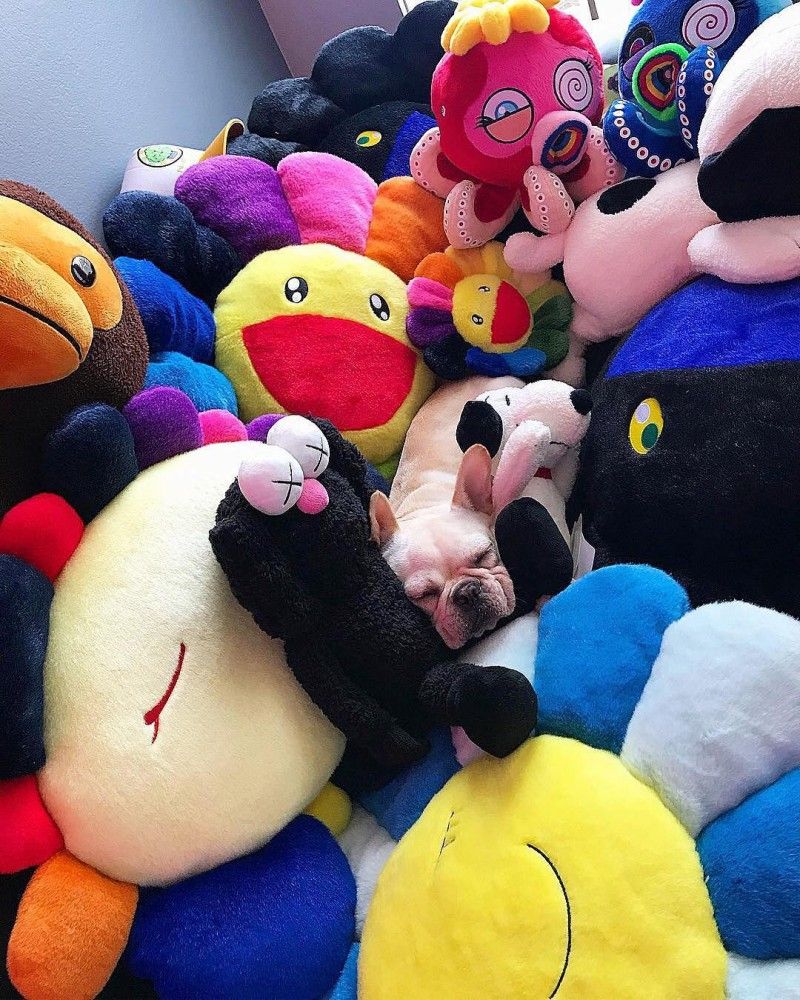
The Benefits of Keeping Your Dog Busy
Keeping your dog busy isn’t just about providing entertainment; it’s about nurturing their mental and physical well-being. Here are several ways in which maintaining a busy pup can lead to a happier and healthier furry friend:
Dogs are naturally curious creatures, and their curiosity often leads to a plethora of activities. Engaging toys and games stimulate their natural instincts, which can prevent boredom and destructive behaviors. A busy dog is a content dog, and this contentment often translates into a well-behaved pet.
Regular exercise is crucial for a dog’s physical health, but it’s not just about the physical benefits. Dogs need mental stimulation to stay sharp. A busy dog is less likely to develop cognitive disorders and can maintain a strong, healthy body through regular play and activity.
When a dog is left alone, they can become anxious or stressed. Providing them with toys and activities can help distract them from their fears and reduce separation anxiety. A dog that’s busy is less likely to bark excessively or exhibit other signs of distress when you’re not around.
Dogs are social animals, and playtime can be a bonding experience. Whether you’re throwing a ball or hiding treats, these activities can strengthen the relationship between you and your pet. A busy dog is often a more affectionate and responsive companion.
A busy dog is less likely to engage in unwanted behaviors, such as digging, chewing, or scratching. These activities can damage your home and furniture, not to mention the stress they can cause you. By keeping your dog occupied, you’re setting them up for a lifetime of good behavior.
Stress can lead to a variety of health issues in dogs, including digestive problems, skin irritations, and even heart disease. A dog that’s constantly on the move and engaged in play is less likely to experience the negative effects of stress. This can lead to a longer, healthier life for your furry friend.
Playtime can be a great way to work on your dog’s training. By using toys as rewards for good behavior, you can reinforce positive training techniques. A busy dog that’s also well-trained is a joy to have around.
For dogs with specific health issues, keeping them busy can be particularly beneficial. For example, dogs with arthritis may find relief from their discomfort when they’re engaged in low-impact activities like fetching a soft toy. Similarly, dogs with mobility issues might enjoy interactive puzzles that require minimal movement but stimulate their minds.
A busy dog is also more likely to sleep better at night. Regular exercise and mental stimulation can help them burn off excess energy, leading to a more restful sleep. A well-rested dog is generally more pleasant to be around and can handle the day’s challenges with greater ease.
Lastly, a dog that’s kept busy is more likely to be a part of the family. They’re more involved in daily activities, which can lead to a stronger sense of belonging. A dog that feels like an integral part of the household is more likely to be a well-adjusted and happy pet.
In conclusion, the benefits of keeping your dog busy are numerous. From physical health to mental well-being, from bonding to behavior, a busy dog is a happier dog. By providing your furry friend with the right toys, activities, and attention, you’re not just filling their time; you’re enriching their life in countless ways.
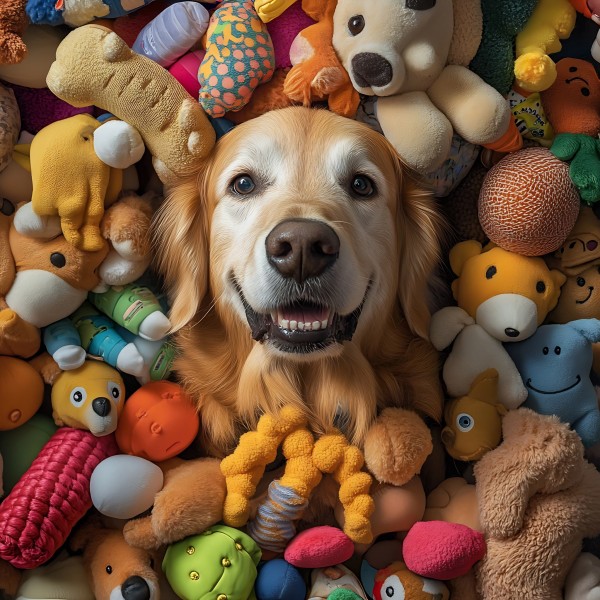
Final Thoughts: Making Home Alone Time Enjoyable for Your Dog
In the quiet solitude of a home where the human world is absent, a dog’s day can take on a different rhythm. Ensuring that your canine companion has enjoyable and engaging home alone time is crucial for their mental and physical well-being. Here are some final thoughts on how to make those moments truly delightful for your pup.
Dogs, by nature, are social creatures that thrive on human interaction. When left alone, their energy can manifest in various ways, from the mundane to the destructive. Providing them with the right mix of toys and activities can turn their solitude into a satisfying experience. Here are a few ways to ensure your dog’s home alone time is enjoyable:
Endless Boredom Can Lead to Unwanted BehaviorLeft to their own devices, dogs might find themselves engaging in less desirable behaviors like excessive barking, digging, or chewing on furniture. By keeping them busy, you can prevent these issues and maintain a harmonious household.
Engage Their Senses with Stimulating ToysToys that engage a dog’s senses can be a game-changer. Think of puzzles that require them to use their problem-solving skills, or toys that make noise when they move, providing auditory stimulation. These types of toys can keep your dog’s mind occupied and their energy levels in check.
Interactive Toys: A Bridge to BondingInteractive toys, such as treat-dispensing balls or electronic toys that move on command, can bridge the gap between your absence and your dog’s need for companionship. These toys can be programmed to respond to your dog’s actions, offering a sense of interaction even when you’re not there.
Chew Toys: A Natural Solution for Nipping Boredom in the BudDogs have a natural instinct to chew, which can be a great way for them to relieve stress and stay occupied. Providing them with sturdy chew toys can satisfy this instinct and prevent them from turning to less desirable items around the house.
Smart Toys: The Future of Solo PlayWith advancements in technology, smart toys have become a popular choice for keeping dogs entertained. These toys can track your dog’s activity, provide virtual playmates, and even send you updates on how your pup is doing. They offer a level of engagement that traditional toys can’t match.
Consider Your Dog’s PreferencesNot all dogs are the same, and what one dog loves, another might ignore. Pay attention to what your dog enjoys and what they show little interest in. Some dogs might be more attracted to plush toys, while others might prefer something more durable and interactive.
Use Toys as a Part of a RoutineIntegrating toys into your dog’s daily routine can help them anticipate and enjoy their alone time. For example, you might give them a new toy each day, or save certain toys for when you’re away. This can help manage their expectations and keep them looking forward to their solo playtime.
The Importance of SupervisionWhile toys are a great way to keep your dog occupied, it’s important to supervise their play, especially with toys that might pose a choking hazard or have small parts. This ensures their safety and helps you monitor their behavior.
Creating a Comfortable SpaceDogs often seek comfort in familiar surroundings. Consider setting up a cozy spot in your home where your dog can retreat and enjoy their toys. This might be a bed with a blanket, a corner with their favorite toys, or a crate with soft bedding.
Teaching Them to Enjoy SolitudeSome dogs might become anxious or destructive when left alone. Teaching them to enjoy solitude can take time and patience. Gradually increase the amount of time you’re away, and provide them with toys and activities that keep them engaged.
The Psychological Benefits of Keeping Your Dog BusyA dog that is mentally stimulated is less likely to develop separation anxiety or destructive behaviors. Engaging toys can also help reduce stress and anxiety, leading to a happier and healthier dog.
Final Thoughts on Making Home Alone Time EnjoyableIn conclusion, making home alone time enjoyable for your dog is about providing them with the right tools and environment to keep them occupied. By considering their preferences, integrating toys into their routine, and creating a comfortable space, you can ensure that your dog looks forward to their alone time as a respite from the hustle and bustle of daily life. Remember, a well-prepared dog is a happy dog, and their contentment can translate into a peaceful home for everyone.
